
A photographic safari in Nsefu, South Luangwa National Park, Zambia


Late September is a stunning time in the Nsefu area of Zambia’s South Luangwa National Park, with very little standing water beyond the drying river. This concentration of game along the remaining waterways often causes interactions and social compression among animals that we do not see at other times of the year. It’s the perfect recipe for the ideal photographic safari!
The remote and wild Nsefu Sector of the park attracts a stream of returning visitors, back for another wild and excellent safari, as well as curious first-timers – lured in by the fantastic sighting reports and stunning photography emanating from the area. Africa Geographic offers personal, private guided safaris to this photographic Eden with professional photographer and guide Edward Selfe. A one-on-one photographic skills ‘boot camp’, if you will.
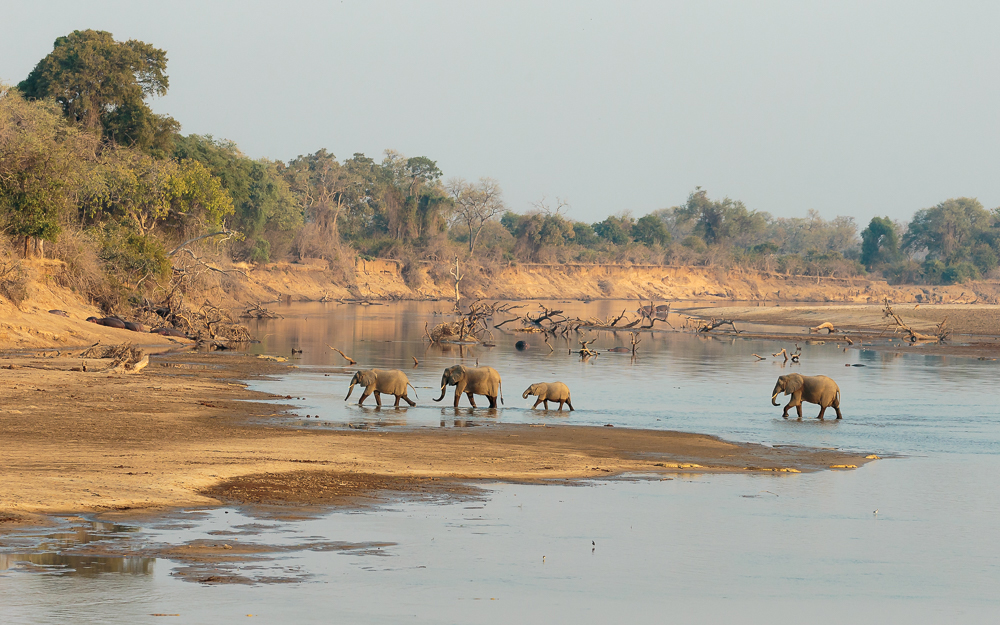
In September this year, Edward guided a return client, Peter, and had this to say: “I had the pleasure of sharing some extended time with Peter – and what a grand time it turned out to be!
“We enjoyed one of the best carmine bee-eater colonies that I’ve seen in ten years – stretching along 250 metres of the riverbank and with multiple access points for viewing – comprising approximately 5,000 birds. It also just so happened when we were there that a scavenging kite flew over, and the sound and explosion of startling red wings taking to flight was so magnificent that words can hardly describe the scene.
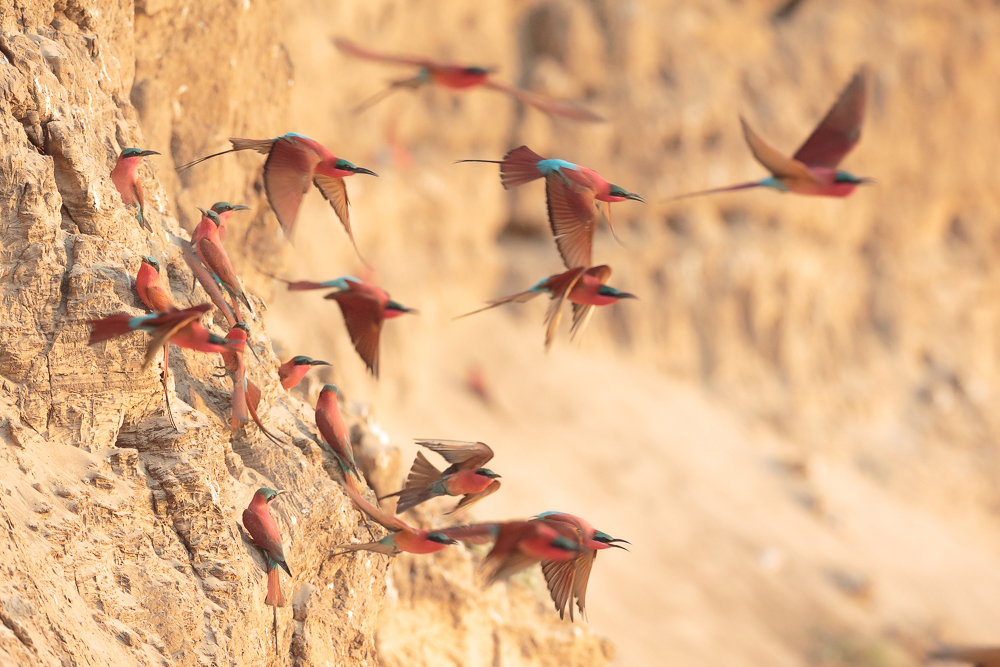
“Leaving camp early one morning, we spotted a honey badger in the distance. Cutting a corner to catch up with him, we could see why he was moving away from us: he had just caught a catfish and was trying to get to the safety of a large bush before someone else took his prize!
“After a couple of excellent mornings out in the bush – with good game sightings in a mix of diverse and interesting situations – we decided to explore the central area of the Nsefu Sector, where there’s a beautiful hot spring that draws game from all around the park. Any trip to this gem is bound to be beautiful, and occasionally it provides visitors with some surprises.
“The journey to the hot springs takes about 45 minutes across the beautiful Mtanda Plains. Here, we were lucky to see zebras, wildebeest, approximately 600 buffalo, and lots of crowned cranes on the way to the hot springs. We also spotted an elephant herd who were moving in the distance between dead trees, and we waited for just the right photo opportunity to come our way.”
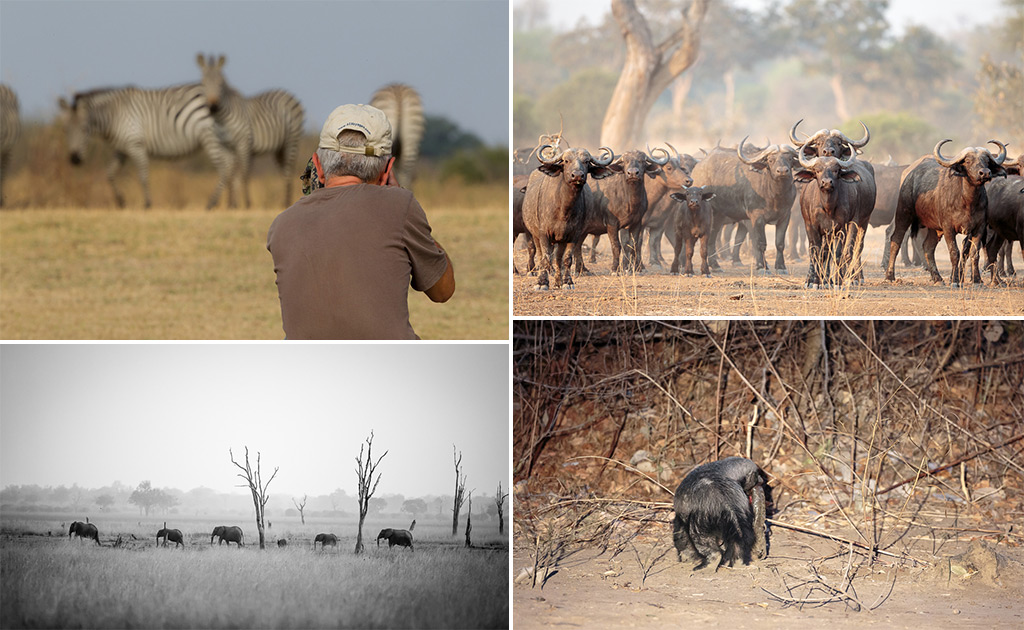
A morning to remember
Edward Selfe continues: “Early the following morning, we enjoyed one of the best game viewing periods of the week. Soon after leaving camp, we found a pair of leopards finishing off an impala carcass that they’d killed the day before. True to their leopard nature, they were quite shy, so they moved off quickly, giving us a good sighting, but we had to be quick if we wanted to capture any photos of this magnificent pair.
“Shortly after, we heard some hyenas giggling nearby and decided to follow their call. Unexpectedly, as is so often the case in Africa, we came across a coalition of three male lions who were feeding on a hippo! Whether they had killed it is up for discussion, but it was stinking quite badly by the time we got to the scene, so we suspected it had died of natural causes some days previously.
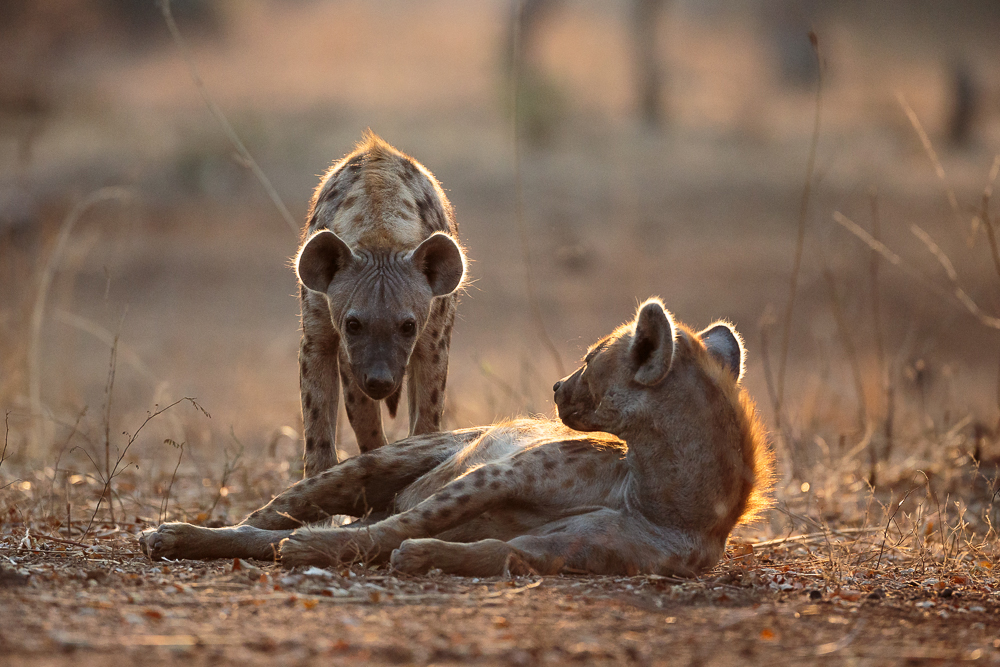
“There were a lot of hyenas near the kill, but they dared not approach too close while the large male lions were still there. We sat and watched knowing that, at some stage, the well-fed lions would move off, and the scavengers would get their chance.
“Taking turns to guard the carcass, the lions were reluctant to relinquish the stinking hippo to the hyenas, despite its decomposed state! Initially, the lions were feeding, taking turns to protect the carcass. Two of the lions moved off, and eventually the third followed, giving the hyenas a chance to move in. But not for long!
“Wondering how the morning could get any better than that, we decided to follow some baboon calls that we’d been ignoring for some time. The baboons were shouting their leopard alarm call, but I held my expectations in check since the calls had been going on for some time and the leopard had likely moved on. Fortunately, we found him crossing the open grassland, and in the best morning light I had seen! It was a privilege to spend time in the presence of an enormous and magnificent male leopard such as this one.
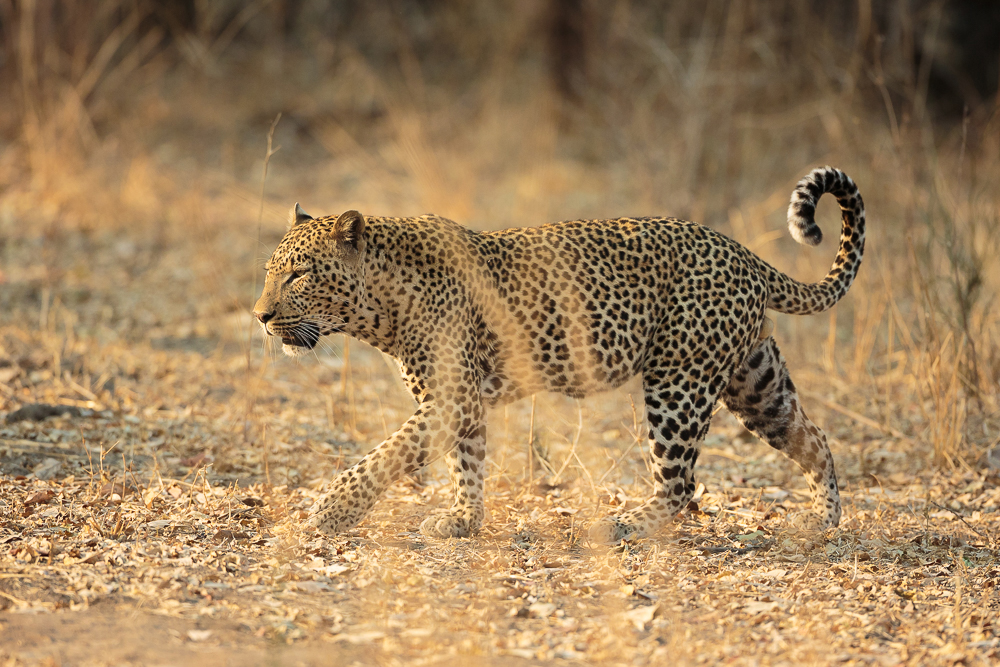
“After the drama of the morning, we decided to stay close to the lion sighting in the afternoon, in case the three large males came to drink at the river. On leaving camp, we found that they’d already moved to the water’s edge and were sitting on the wet sand, being silently observed by about 30 giraffes on the other side!
“The lions had spread their smell all over the elephants’ usual crossing point, so the elephants moved upstream to a spot where we could get down to their level and watch as they splashed through the water towards us.
“Returning to where the lions were waiting on the riverbank, we found a large herd of buffalo heading to drink at the same spot. Hoping that a hunt might take place, we hung back, waiting to get into a position where we could see clearly without spooking the herd.
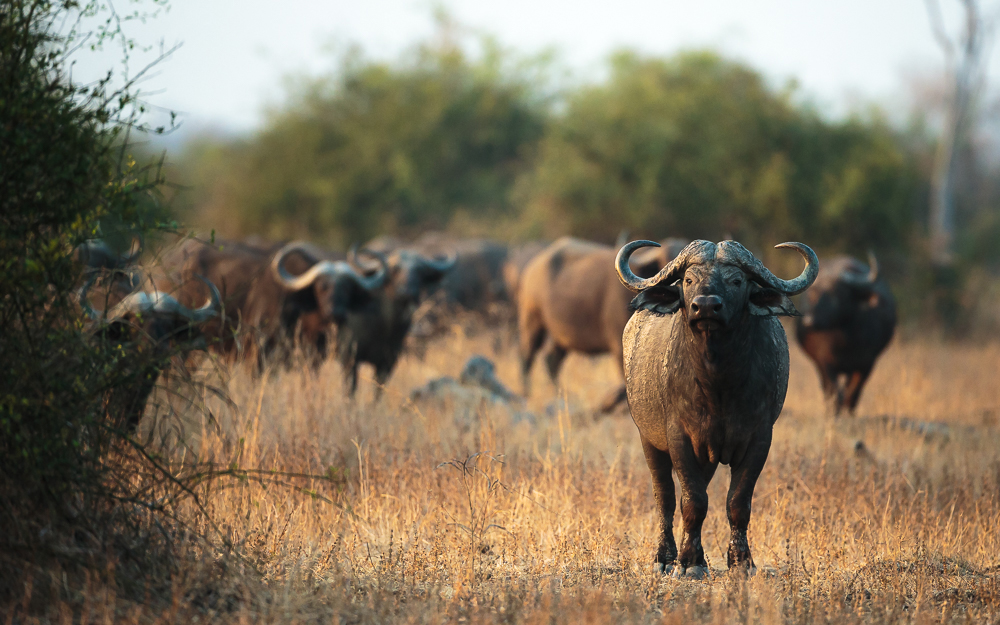
“Primarily, our presence in the bush must be non-invasive, and we have to take care not to influence the outcome of any wild and natural situation.
“That said, scenting the air to decide if we were a threat, these buffalo decided to drink elsewhere, avoiding a possible meeting with the lions!
“We then decided that it would be a good idea to continue following the lions and the herd the next morning. At 04:15 am, I awoke to the sound of male lions calling loudly. Being sub-adults, these lions had not been calling much, so I suspected that their call was one of victory, having just made a kill. Indeed, on leaving camp in the morning, we came across the three of them breaking into the large bulk of a female buffalo they had killed just 500 metres from the camp!
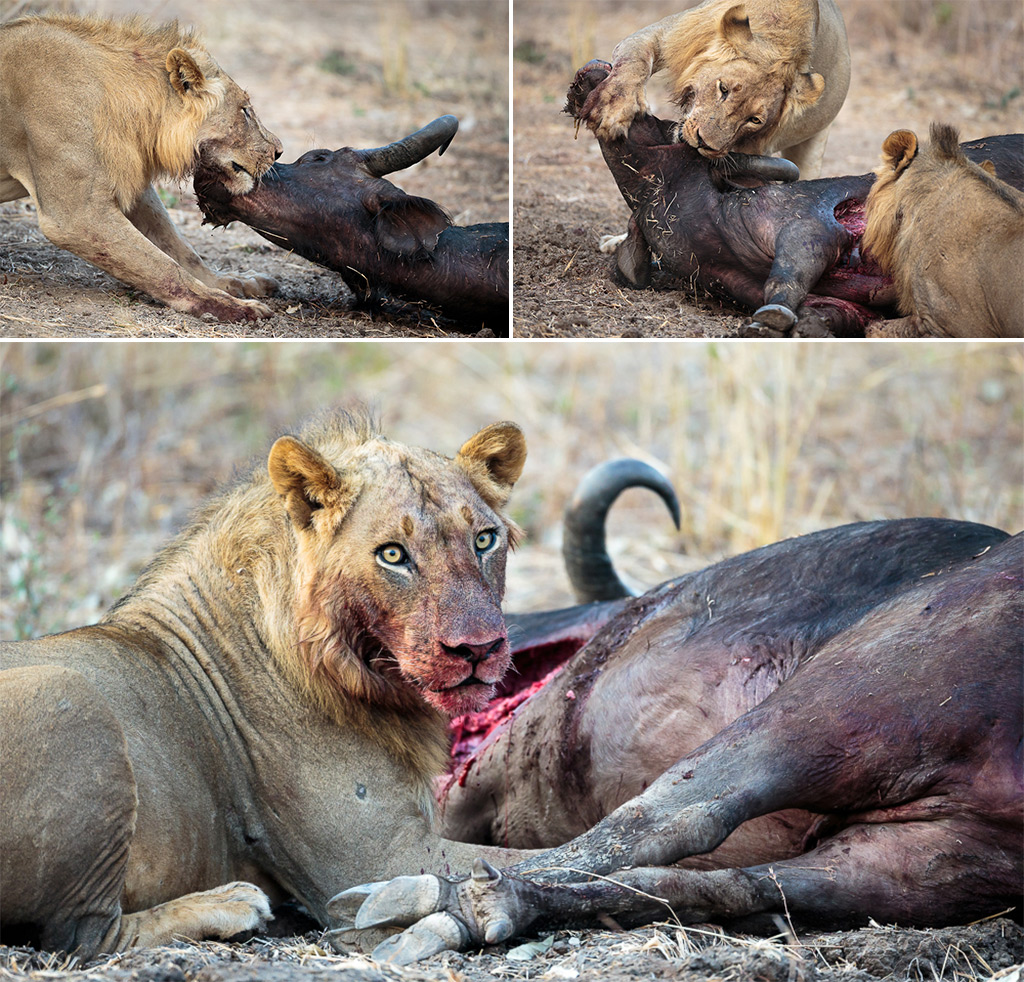
“The youngest of the three continued re-enacting the killing of the buffalo even though she was long dead, while the largest male got down to the serious business of eating!
“With hundreds of photos taken of the feeding frenzy that morning, we headed back to camp to prepare for our departure for the airport. It was a fantastic final morning – and a reminder that, no matter how well the week is going, you can never be sure what tomorrow will bring!
Suffice to say, Peter and I had a great week in the Nsefu Sector.”
Let’s go on safari again!
Soon after the tour with Peter had concluded, Selfe accompanied another Africa Geographic client, a photographer and wildlife enthusiast, Phillip.
Selfe remembers: “On our first morning drive, we returned to the lion kill which we had been observing at the end of my previous safari with Peter. We found that the lions were still guarding the buffalo carcass, even though they had full stomachs and could barely force another morsel down their throats.
“Such is their instinct to protect the resources which they rely on for their survival. However, eventually, the lions moved away, and the hyenas wasted not a moment before rushing in to claim the leftovers.

“At one stage, several hyenas ran off into the distance, making me wonder if they had gotten wind of another kill nearby, perhaps by wild dogs. We moved off to follow them, but found only a stunned-looking puku in the interlocking bends of the Kauluzi stream.
“A great advantage of the dry conditions at this time of year is that it brings together lots of game in the zone along the river, often requiring minimal travelling to get a wide variety of sightings.
“Sausage trees are a mecca for lots of game at this time of year – the fresh buds, soft flowers and tender fruits attract giraffes, buffaloes, pukus, bushbucks, impalas, elephants, baboons, monkeys, squirrels and birds.
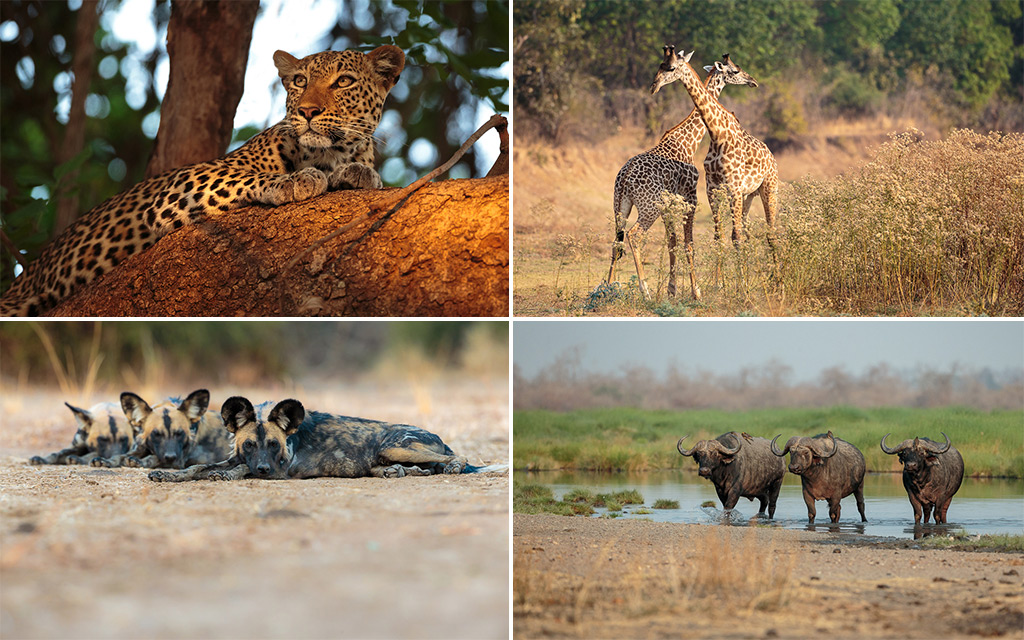
“We had heard that some very young lion cubs had been seen with one of the prides recently. Following their tracks, we located four youngsters in a remote back-country gully along the Kauluzi stream. It was amazing to see how innocent and vulnerable they were. They showed no concern about our (cautious) approach and barely flinched when we shone the spotlight’s edge on them to take some quick photos.
“There was a herd of buffalo nearby, and I could hear hyenas in the distance – with no sign of the cubs’ mother.
I was concerned about drawing attention to the area, so we moved on after a short time.
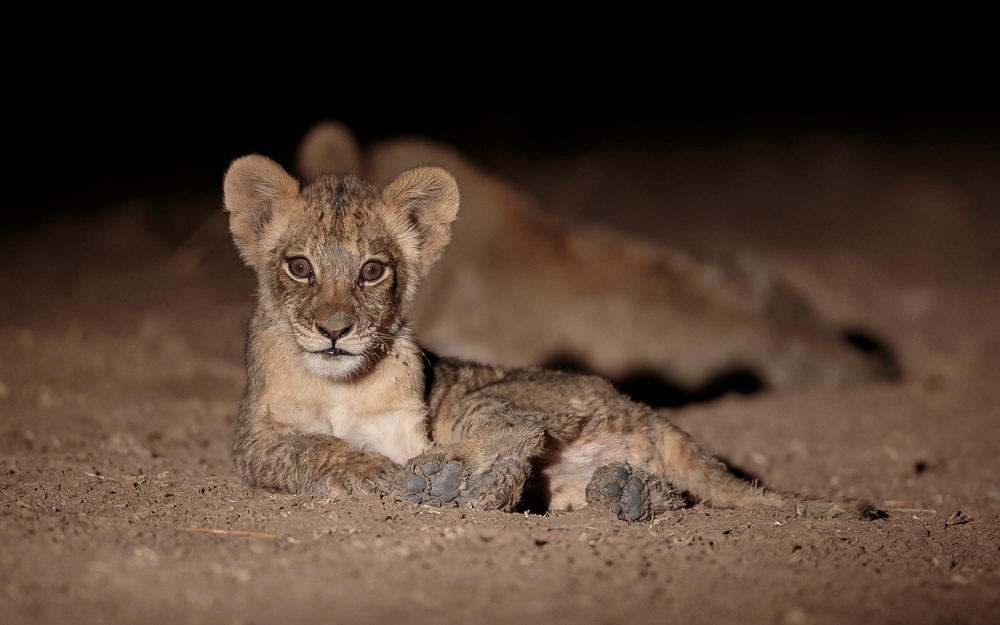
“We returned to the scene in the morning, but there wasn’t any sign of the cubs – only tracks to show that the buffalo herd had been through the area. I was worried they might have driven the cubs into the dry channel, but another guide found them elsewhere later in the week, so thankfully their mother must have come to the rescue!
“Arriving at my planned safari area for the day, we quickly found that something was up. The antelope looked very spooked, and we soon found a leopard feeding on an impala in a bush. She was deep in the bush, and we wondered if we’d get a good view when, suddenly, a lioness arrived and stole the carcass from her!
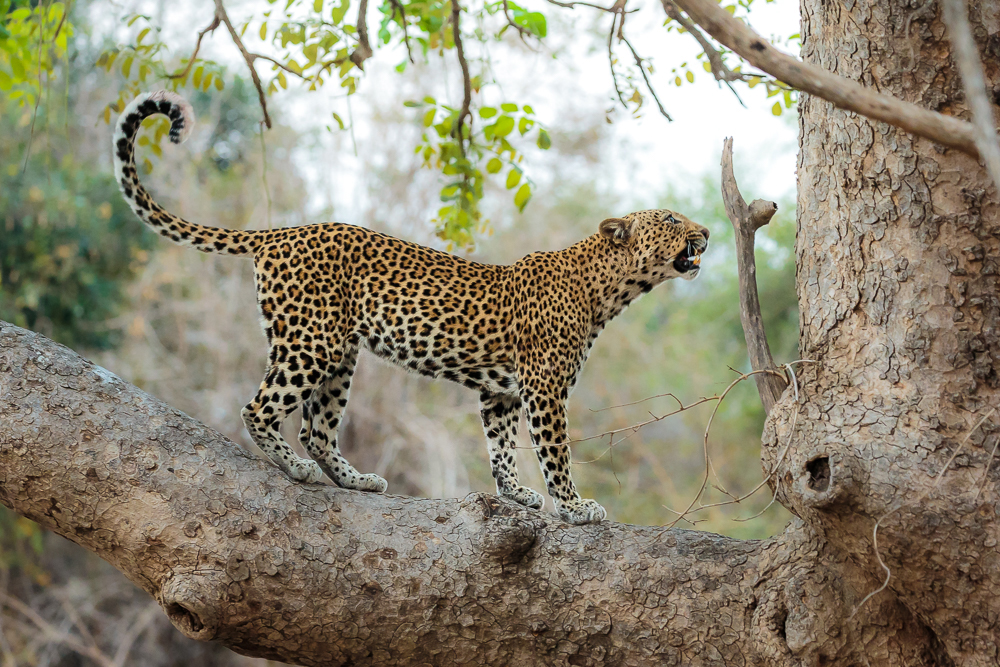
“After all this drama, we decided to visit the beautiful salt pans in the centre of the park. On arrival, we got fleeting views of a serval cat and a honey badger carrying a cub in her mouth, but after that, the area was uncharacteristically quiet. However, we waited and were rewarded with a group of 11 buffalo coming to drink from the clear water at the spring’s source.
“The following morning, we decided to go in search of a leopard once again. Leaving early and stopping regularly, we picked up a puku’s call and headed to the area to check. An amazing sight greeted us. A hyena was feeding on a puku carcass on the ground, and a leopard was watching from a nearby tree!
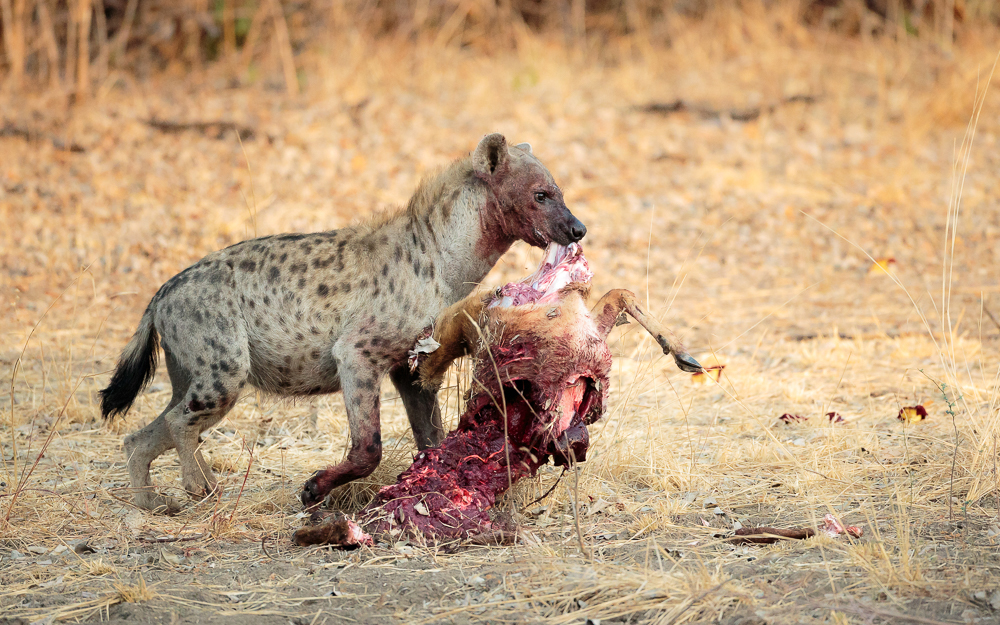
“After a few moments, the leopard came down from the tree, hoping to clear up some of the scraps that the hyena had left during its messy feeding session. Inexplicably, the hyena suddenly moved off, and the leopard wasted no time in grabbing the carcass and heading to the tree where she made short work of dragging it to the lowest branch, and safely away from the scavengers!

“Here, we also got my favourite photo of the entire trip: a white-fronted bee-eater offset by the purple flowers of a vernonia shrub. I love the soft colours!
“Just when we thought it was all over, Luangwa offered us one more gem. A newborn, minutes-old puku calf, which was still covered in afterbirth. We took great care not to get too close, but we still managed to capture some precious photos—and enjoy the remarkable start of a new life in the bush.
“Philip’s approach to the bush was admirable to me. His genuine belief that no sighting, no matter how big, small or seemingly insignificant, should be taken for granted served him well in Luangwa. Very often, we found the best sightings when we stopped to watch the smaller events, and hear a tiny squeak of a sound that leads us elsewhere, to some of the best bush sightings I’ve ever had.” ![]()

On a photo safari in Nsefu, South Luangwa

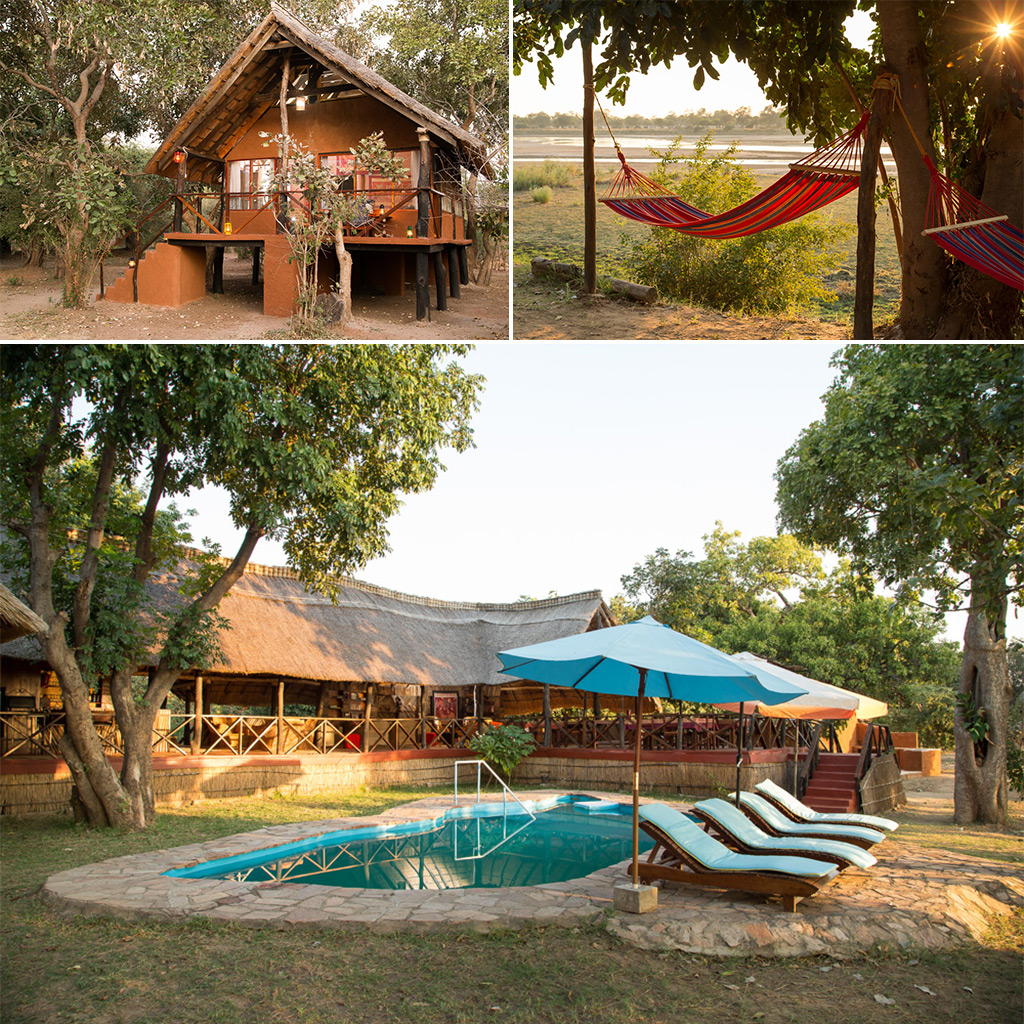
South Luangwa National Park information
South Luangwa National Park is known as the birthplace of walking safaris and for its authentic, remote seasonal bush camps, which open only after the rainy-season floods have subsided.
SIZE
South Luangwa National Park is a 9,050 km² paradise located along the banks and oxbow lakes of the Luangwa River in eastern Zambia, offering great wildlife sightings. The park is one of three in the Luangwa Valley, the others being the North Luangwa and Luambe national parks.
HISTORY
The creation of the park was primarily influenced by renowned conservationist Norman Carr, who convinced Senior Chief Nsefu – Paramount Chief of the Kunda people in the Luangwa Valley – to set aside a portion of tribal land as a game reserve. This visionary move ensured that the local population would benefit through conservation of the wildlife and habitat of the Luangwa Valley. Then, in 1950, he built the first game-viewing camp open to the public in Northern Rhodesia (now Zambia), and the camp’s revenue was paid directly to the Kunda Native Authority.
ECOLOGY
The park is defined by the Luangwa River that flows through it, and the numerous oxbow lakes that have formed at the river bends. Vegetation ranges from lush riverine forests to open grassy plains, mopane woodland in low-lying areas, and miombo woodland on the higher plateau.
FAUNA AND FLORA
South Luangwa National Park has a very high concentration of leopards, hippos and crocodiles, as well as good populations of elephants and buffalo. Lions and wild dogs are often seen, as are Thornicroft giraffe and many species of antelope. The area hosts about 400 bird species.
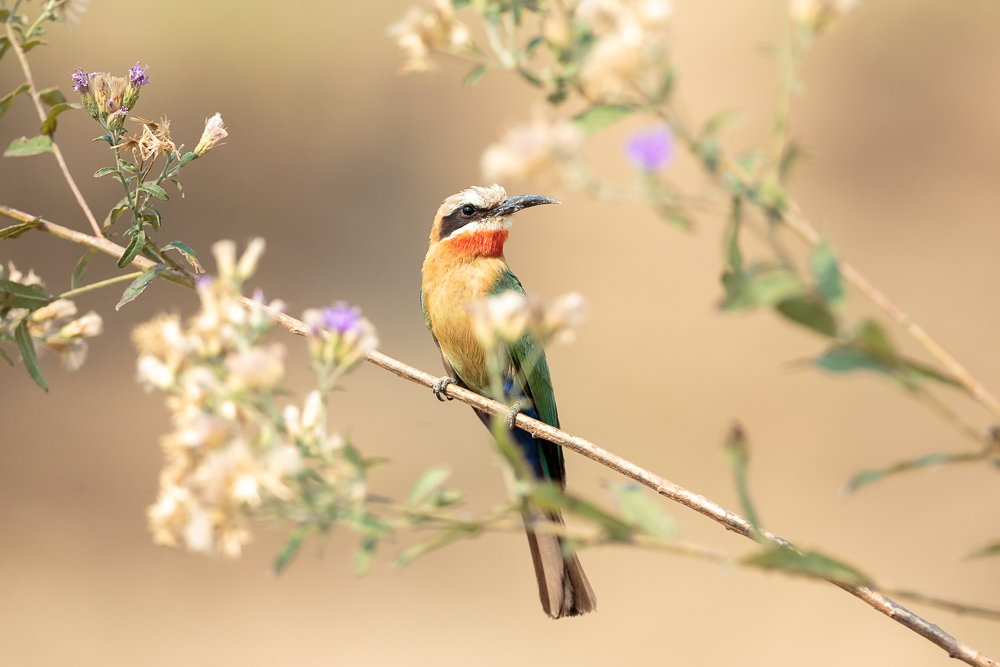
ABOUT THE GUIDE AND PHOTOGRAPHER
 Edward Selfe is a professional guide and photographer living and working in the South Luangwa.
Edward Selfe is a professional guide and photographer living and working in the South Luangwa.
His safaris combine authentic wildlife viewing with excellent photographic guidance, tuition, and opportunities. Edward holds both of South Luangwa’s coveted guiding qualifications, reflecting his love for the bush, its inhabitants and the pleasure of being immersed in wild places.
He enjoys discovering the unusual and taking time to allow behavioural situations to unfold. His safaris are ideal for true safari-lovers who seek a personal experience with nature. He lives near the national park with his wife and daughter.

To comment on this story: Login (or sign up) to our app here - it's a troll-free safe place 🙂.![]()




